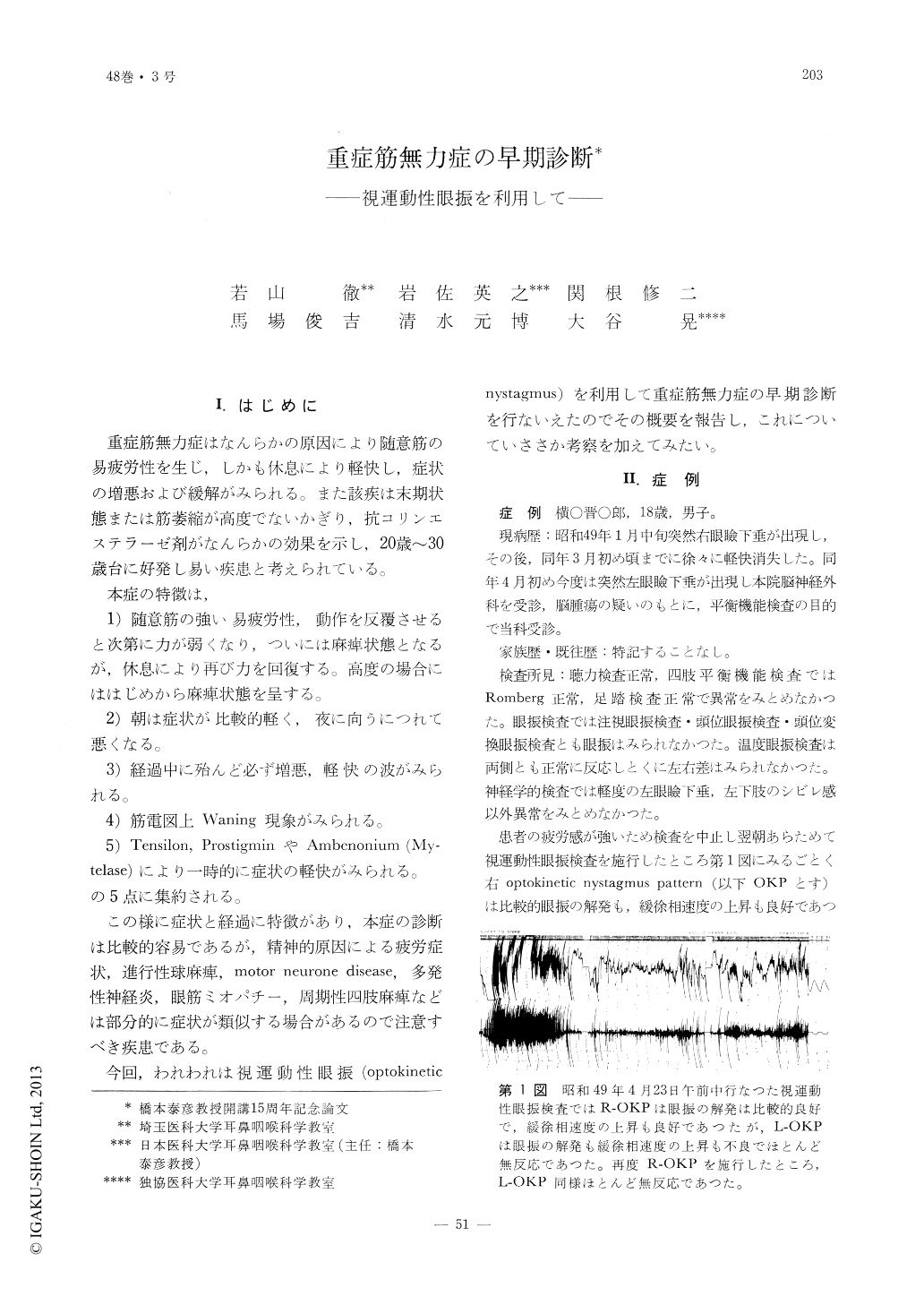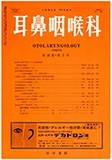Japanese
English
- 有料閲覧
- Abstract 文献概要
- 1ページ目 Look Inside
I.はじめに
重症筋無力症はなんらかの原因により随意筋の易疲労性を生じ,しかも休息により軽快し,症状の増悪および緩解がみられる。また該疾は末期状態または筋萎縮が高度でないかぎり,抗コリンエステラーゼ剤がなんらかの効果を示し,20歳〜30歳台に好発し易い疾患と考えられている。
本症の特徴は,
1)随意筋の強い易疲労性,動作を反覆させると次第に力が弱くなり,ついには麻痺状態となるが,休息により再び力を回復する。高度の場合にははじめから麻痺状態を呈する。
2)朝は症状が比較的軽く,夜に向うにつれて悪くなる。
3)経過中に殆んど必ず増悪,軽快の波がみられる。
4)筋電図上Waning現象がみられる。
5)Tensilon,ProstigminやAmbenonium(Mytelase)により一時的に症状の軽快がみられる。
の5点に集約される。
この様に症状と経過に特徴があり,本症の診断は比較的容易であるが,精神的原因による疲労症状,進行性球麻痺,motor neurone discase,多発性神経炎,眼筋ミオパチー,周期性四肢麻痺などは部分的に症状が類似する場合があるので注意すべき疾患である。
今回,われわれは視運動性眼振(optokinetic nystagmus)を利用して重症筋無力症の早期診断を行ないえたのでその概要を報告し,これについていささか考察を加えてみたい。
Myodystonia is a condition in which the voluntary muscles becomes easily exhausted, which may recover upon rest, and unless this condition is extremely severe anticholestrase drugs will prove to be useful to some extent.
The peak in the occurence of this disease appear to be among the relatively young individuals, ages 20 to 30.
The diagnosis of this disease is relatively simple but there is no specific laboratory test.
Recently, however, the authors have succeeded in arriving at an early diagnosis of this disease by employment of optokinetic nystagmus as a guide. The method of this examination is reported in detail.

Copyright © 1976, Igaku-Shoin Ltd. All rights reserved.


